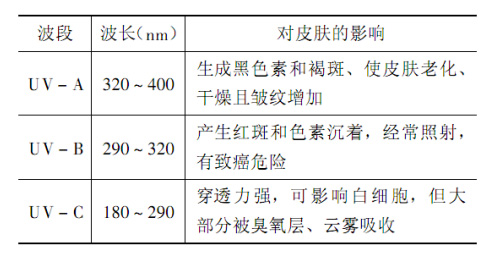Development and application of anti-UV materials
Development and application of anti-UV materials
1. Overview
Theoretically speaking, short-wave ultraviolet rays are absorbed by the ozone layer when passing through the stratosphere on the earth’s surface and cannot reach the earth’s surface and will not cause harm to the human body. However, in recent years, with the increasing use of large amounts of halogen-containing compounds such as Freon by humans, and their continuous emission into the air, a hole in the ozone layer has appeared. Therefore, the amount of ultraviolet rays reaching the earth increases, and humans are also aware of the possible harm that ultraviolet rays can cause to human health. A report pointed out that since 1979, the total amount of China’s atmospheric ozone layer has been decreasing day by day. By 1999, the ozone layer had decreased by 14%. For every 1% decrease in the ozone layer, the incidence of skin cancer will increase by 3%. Studies have proven that ultraviolet rays can cause a decline in human immune function, profoundly damage genetic factors, and lead to an increase in the incidence of skin cancer, cataracts, and stain cancer.
Table 1-1 The harm of ultraviolet rays in different bands to the human body

People are well aware of the various harms that ultraviolet rays can cause to human health. Various sunscreens and anti-UV cosmetics developed by people are favored by consumers, especially female consumers. However, because the protective capabilities and action time of such products are limited, and the various heavy metals contained in their product ingredients will accumulate in the human body, long-term use will cause certain harm to human health. Therefore, people have turned their attention to the research of anti-UV textiles and developed parasols, curtains, hats, etc. with anti-UV properties. People have found that anti-UV textiles can be more effective and block excessive damage to the human body from UV rays over a larger area.
As early as the 1990s, foreign countries began to develop and research anti-UV textiles. Developed countries such as Australia, New Zealand, and Japan have conducted a large amount of research and development on UV-resistant textiles. Among them, Japan has made remarkable achievements. Although there is relatively little domestic research on UV-resistant textiles, the research and development of domestic UV-resistant textiles has developed rapidly in recent years. Many companies in cities along the eastern seaboard have now developed fibers and fabrics with excellent UV protection. However, compared with foreign countries, my country’s research and production of UV-resistant textiles are relatively backward, with fewer types of products and a low degree of commercialization. Therefore, the quality and technical content of my country’s anti-UV textiles still need to be improved, and the improvement of their anti-UV performance and wearability requires more exploration and research. According to the national standard GB/T18830-2009 “Determination of UV Protection Performance of Textiles”, when the UPF of the sample is >40 and T(UVA)AV<5%, the product will have better UV protection properties.
Disclaimer:
Disclaimer: Some of the texts, pictures, audios, and videos of some articles published on this site are from the Internet and do not represent the views of this site. The copyrights belong to the original authors. If you find that the information reproduced on this website infringes upon your rights, please contact us and we will change or delete it as soon as possible.
AA






